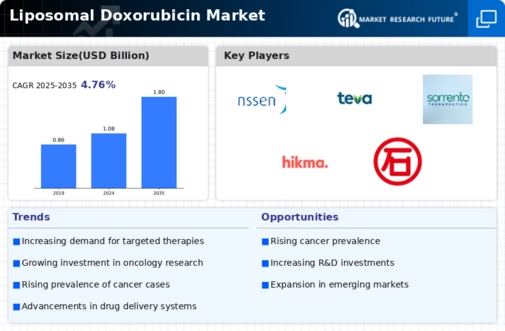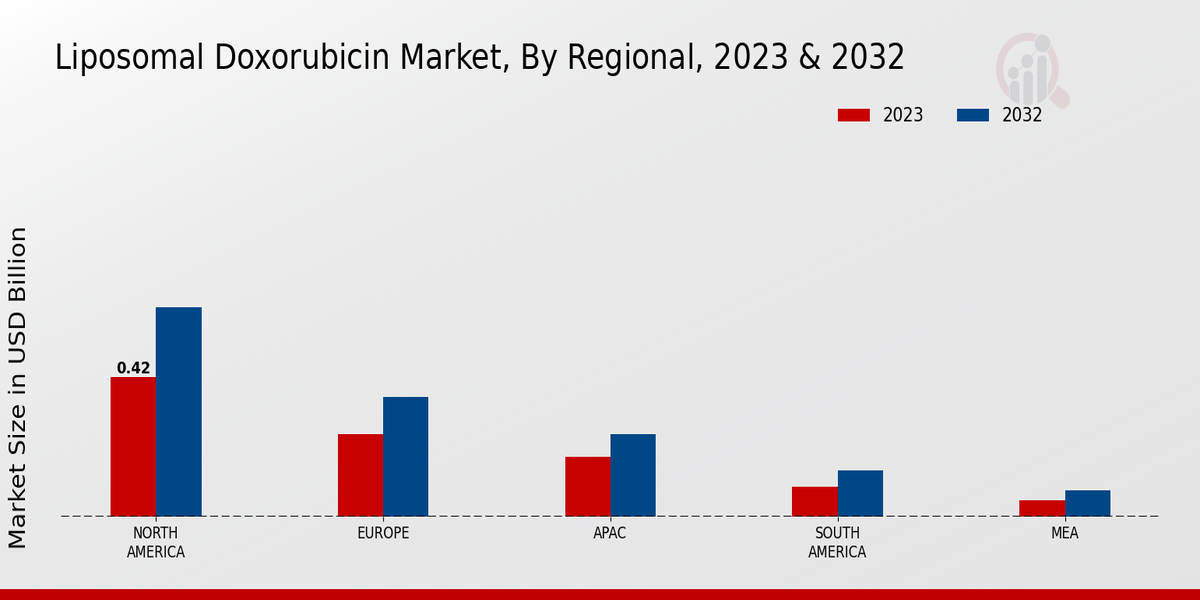Market Growth Projections
Increasing Cancer Incidence
The rising global incidence of cancer is a primary driver for the Global Liposomal Doxorubicin Market Industry. As cancer remains one of the leading causes of morbidity and mortality worldwide, the demand for effective treatment options continues to grow. In 2024, the market is projected to reach 1.08 USD Billion, reflecting the urgent need for innovative therapies like liposomal doxorubicin. This formulation enhances drug delivery and minimizes side effects, making it a preferred choice among oncologists. The increasing prevalence of various cancers, including breast and ovarian cancer, further propels the market forward, as healthcare systems seek to provide effective solutions for patients.
Rising Awareness and Education
The growing awareness and education regarding cancer treatment options significantly impact the Global Liposomal Doxorubicin Market Industry. Patients and healthcare providers are increasingly informed about the benefits of liposomal formulations, which are associated with reduced side effects and improved efficacy. Educational initiatives by healthcare organizations and advocacy groups contribute to this awareness, leading to higher patient demand for advanced therapies. As patients become more proactive in their treatment choices, the market is likely to experience increased adoption of liposomal doxorubicin. This trend underscores the importance of patient education in driving market growth and improving treatment outcomes.
Regulatory Approvals and Support
Regulatory approvals for liposomal formulations play a crucial role in shaping the Global Liposomal Doxorubicin Market Industry. Agencies such as the FDA and EMA have recognized the therapeutic potential of liposomal doxorubicin, facilitating its entry into the market. The streamlined approval processes for innovative cancer therapies encourage pharmaceutical companies to invest in research and development. This regulatory support not only enhances patient access to effective treatments but also stimulates market growth. As more products receive approval, the competitive landscape becomes increasingly dynamic, further driving the demand for liposomal doxorubicin as a viable treatment option.
Advancements in Drug Delivery Systems
Technological advancements in drug delivery systems significantly influence the Global Liposomal Doxorubicin Market Industry. Innovations in liposomal formulations enhance the pharmacokinetics and biodistribution of doxorubicin, leading to improved therapeutic outcomes. These advancements allow for targeted delivery, reducing systemic toxicity and enhancing the efficacy of the drug. As a result, the market is expected to grow at a CAGR of 4.76% from 2025 to 2035, reaching an estimated 1.8 USD Billion by 2035. The continuous research and development in this area indicate a strong commitment to improving cancer treatment modalities, thereby attracting investments and fostering collaborations among pharmaceutical companies.
Market Dynamics and Competitive Landscape
The competitive landscape of the Global Liposomal Doxorubicin Market Industry is characterized by the presence of several key players and emerging companies. This dynamic environment fosters innovation and encourages the development of new formulations and delivery methods. Companies are increasingly focusing on strategic partnerships and collaborations to enhance their product offerings and expand their market reach. The competition drives pricing strategies and influences the availability of liposomal doxorubicin in various regions. As the market evolves, understanding these dynamics becomes essential for stakeholders aiming to capitalize on growth opportunities and navigate the complexities of the industry.
















